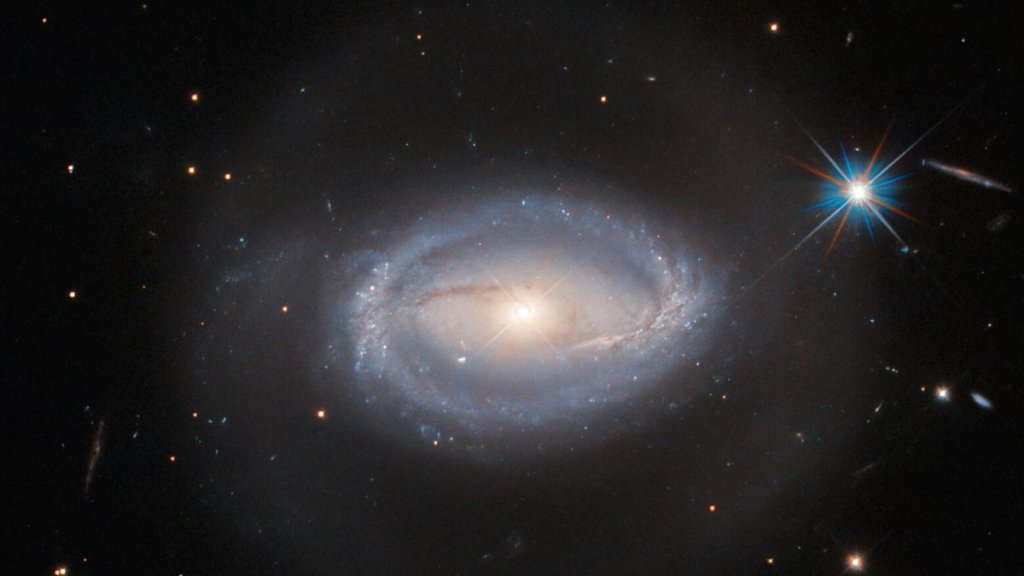Space is hard, the adage goes. And we’d extrapolate that sentiment to the classification of celestial objects, particularly ones like Z 229-15.
A newly released image taken by the Hubble Space Telescope shows Z 229-15, which, at first glance, simply appears to be a spiral galaxy, given its two spiraling arms of stars emanating from a bright core. But it’s far, far more than that.
Z 229-15 is one of those objects that fits several classifications, according to a statement (opens in new tab) released by the European Space Agency (ESA). “Z 229-15 is one of those interesting celestial objects that, should you choose to research it, you will find defined as several different things,” the statement reads. While it’s impossible to pin down a singular classification for Z 229-15, there are several overlapping definitions that together describe this wondrous celestial object.
Related: Hubble Space Telescope: Pictures, facts & history
First and foremost, Z 229-15 is indeed a galaxy, which is a gravitationally bound collection of stars.
Second, it’s an active galactic nucleus (AGN), or rather, it contains an AGN. An AGN is a region at the center of a galaxy that is exceptionally bright due to a supermassive black hole at its core. It’s not the black hole itself that’s so luminous, but rather all the material from the galaxy that has been trapped in a spinning disk around it, having been drawn toward the black hole by its intense gravitational pull. That disk heats up and emits massive amounts of energy across the electromagnetic spectrum, resulting in the brightness.
And that’s not all. Z 229-15’s AGN is also a quasar, which is a specific subtype of AGN. The criteria for an AGN to be classified as a quasar include extreme brightness and a great distance away from Earth — on a cosmic scale, of course. As you can see from the Hubble image, Z 229-15 is indeed very bright in the center. And given that it’s 390 million light-years away from Earth, it’s far enough away to be considered a quasar (though that distance means it’s actually a “nearby” quasar).
You bet there’s more. Most quasars are so bright that they drown out our view of the stars in the galaxy. But when a quasar isn’t that bright, allowing us to see stars, it’s considered a Seyfert galaxy. And per the stars visible in its Hubble portrait, Z 229-15 is definitely a Seyfert galaxy.
So, technically, Z 229-15 is a Seyfert galaxy with a quasar-subclass AGN. As ESA, which co-manages Hubble with NASA, calls it, Z 229-15 is “Everything, in one place, all at once” — a clever nod to this year’s Academy Awards Best Picture winner “Everything, Everywhere, All at Once.”
Follow Stefanie Waldek on Twitter @StefanieWaldek (opens in new tab). Follow us on Twitter @Spacedotcom (opens in new tab) and on Facebook (opens in new tab).

